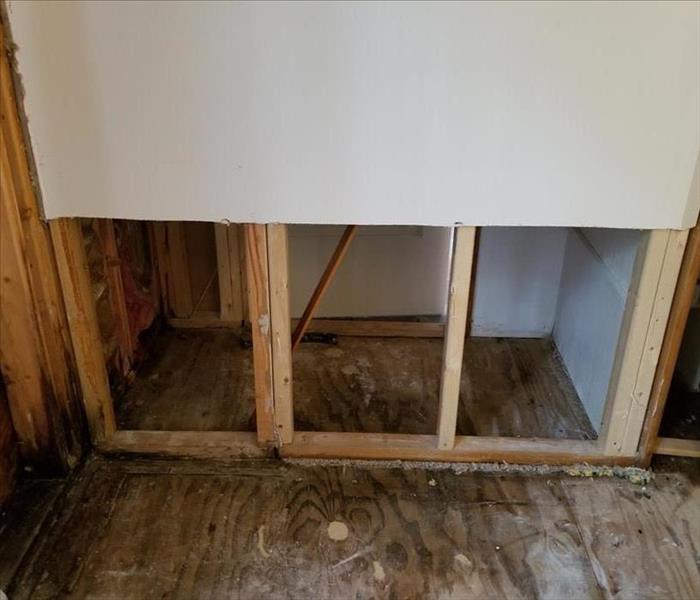What Can a Flood Cut Reveal?
1/26/2022 (Permalink)
 You can trust our trained team to restore your business or home after a storm, to make it "Like it never happened."
You can trust our trained team to restore your business or home after a storm, to make it "Like it never happened."
What Information Can A Flood Cut Provide?
Commercial property owners in locations prone to flooding may have heard of a flood cut. This procedure involves cutting out drywall one foot above the highest point of flood damage. Flood cuts enable damage mitigation experts to determine the extent of moisture present behind a wall. Here are several things this type of cut may reveal.
The Extent of Damage
A flood cut can help experts determine how much water is present in wall cavities. Standing water or residual moisture can heighten the risk of mold growth in a structure. A flood cut can also indicate other types of damage:
- Saturated drywall
- Ruined insulation
- Hidden moisture
Depending on the degree of damage, restoration experts may recommend that owners have restoration professionals tear out and replace drywall and insulation. If damage is less severe, increased ventilation and a dehumidifier can promote drying.
Whether Tearing Out Is Necessary
Porous materials such as drywall and insulation can be ruined by saturation with water and will pose a heightened mold risk. The category of water damage is an important consideration. If water damage resulting from a broken pipe is addressed quickly, drying may be all that is necessary. Contamination is probably a factor for damage caused by a sewer backup or flooding, and more extensive cleanup and restoration may be necessary.
Whether Mold Is Present
If water damage occurred more than 48 hours earlier, a flood cut can help experts determine whether mold is growing. This procedure may expose an amateur to mold spores. For this reason, business owners should not attempt to make a flood cut, particularly if a musty odor or other indications of fungal growth are present.
Only a mitigation expert should make a flood cut at a building in Tuckahoe, NY . To determine whether this procedure is necessary after flooding, contact a service that specializes in storm and water damage.

 24/7 Emergency Service
24/7 Emergency Service